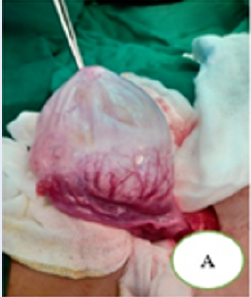Characteristics and Outcomes of Pediatric Ovarian Germ Cell Tumors: A Report of 162 Cases
DOI:
https://doi.org/10.15419/bmrat.v10i11.847Keywords:
Ovarian germ cell tumor, Germ cell tumor, Mature teratoma, Malignant ovarian germ cell tumorAbstract
Background: Ovarian germ cell tumors (OGCTs) are the most common type of ovarian tumor, encompassing mature and immature teratoma and malignant tumors. The standard treatment for mature teratoma is surgery, traditionally involving oophorectomy or salpingo-oophorectomy. However, these procedures reduce ovarian tissue reserve and carry a high risk of bilateral tumor development. Therefore, ovarian tissue-sparing tumorectomy has emerged as a popular alternative. This procedure aims to remove the tumor while preserving as much healthy ovarian tissue as possible, mitigating the risk of bilateral tumor development and preserving future fertility. The primary treatment approach for malignant OGCTs is surgery followed by postoperative chemotherapy. This combined treatment strategy aims to achieve complete resection and increase the likelihood of a long-term cure. There are very few studies on pediatric OGCTs within the Asian population. Therefore, this study aimed to comprehensively review the clinical presentation, treatment modalities, and outcomes of pediatric OGCTs at a tertiary hospital in Vietnam.
Methods: This retrospective study examined patients aged 1 month to 15 years treated for OGCTs at Children's Hospital No.2 between January 2016 and January 2021. Their symptoms, age at diagnosis, imaging, tumor markers, treatment methods, and complications were recorded. The long-term outcomes were the rate of recurrence and mortality.
Results: This study comprised 162 patients with a mean age of 9.1 +/- 3.6 years. Most had mature teratomas (n = 137), followed by immature teratomas (n = 11), yolk sac tumors (n = 7), dysgerminomas (n = 5), and mixed germ cell tumors (n = 2). At admission, their most common complaint was abdominal pain (73.5%), followed by abdominal mass (20.4%). Alpha-fetoprotein (AFP) levels were elevated in nine patients with immature teratomas, all with yolk sac tumors, all with malignant mixed germ cell tumors, and one with dysgerminoma. Beta human chorionic gonadotrophin (b hCG) levels were elevated in two patients with dysgerminomas and all with malignant mixed germ cell tumors. The mean tumor size was 9.1 +/- 5.1 cm (2.8–32 cm). Our study identified size tumor 8 cm, solid mass, and positive tumor markers as important predictors of malignancy. The median follow-up was 3.3 years (3 months to 6.5 years). Among patients with mature teratomas, three (2.2%) experienced recurrence, and none died. Among patients with immature teratomas and malignant OGCTs, one (4%) experienced relapse and died.
Conclusions: Both benign and malignant OGCTs have a good prognosis. Imaging and tumor markers are important for initial diagnosis and treatment planning. Ovarian-sparing tumorectomy is a safe and effective management option for mature teratomas. Surgical resection combined with platinum-based chemotherapy achieves good outcomes for malignant OGCTs.

Published
Issue
Section
License
Copyright The Author(s) 2017. This article is published with open access by BioMedPress. This article is distributed under the terms of the Creative Commons Attribution License (CC-BY 4.0) which permits any use, distribution, and reproduction in any medium, provided the original author(s) and the source are credited.
